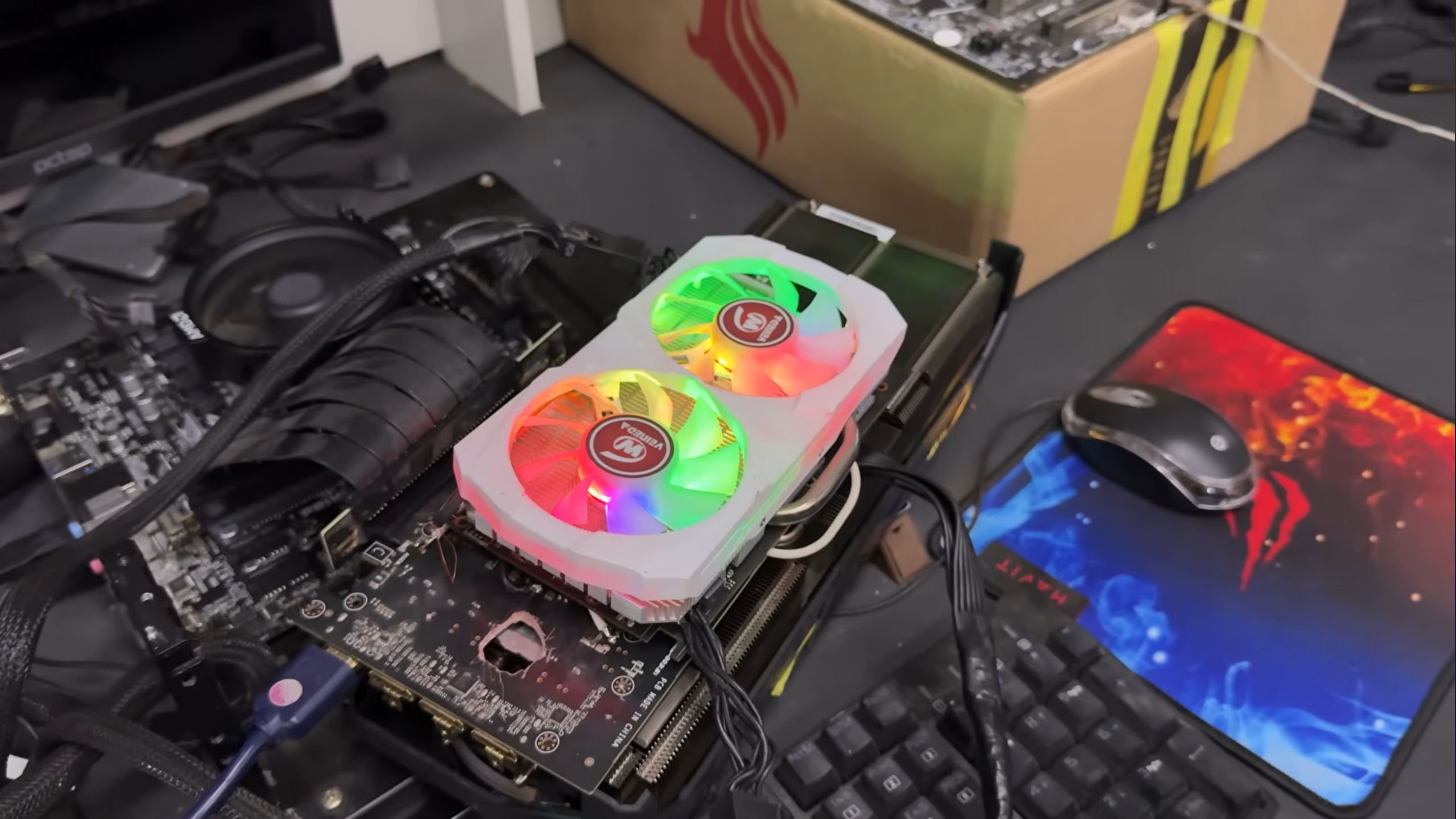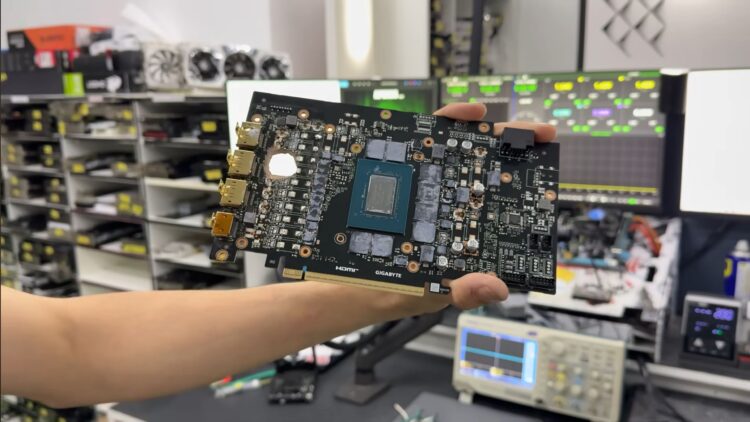Brazilian modder Paolo Gomes and his friend recently pulled off a feat that would’ve seemed impossible to the average technician: bringing a dead NVIDIA GeForce RTX 5070 Ti back from the dead. And when we say from the dead, we’re talking burned out section, hole-in-the-PCB kind of dead.
Gomes essentially received the “unusable” RTX 5070 Ti that was scheduled to be scrap, and to say it was wrecked isn’t an understatement. Basically, the PCB was missing several VRM modules, either burnt from excessive power or just exploded. Then there’s the massive, gaping hole on the side close to the output ports; Gomes himself was pondering if the hole originated from a gunshot, given the size of the bore.

Getting back on point, after some cleaning, Gomes decided that his best bet in bringing the dead RTX 5070 Ti back to life was by wiring an AMD Radeon RX 580 to it. And when we say wiring, we’re talking soldering and external connections, in order to utilise the fully-functioning electrical power of the latter to the broken GPU.
The process, as some of you can imagine, was less than ideal. As it stands, NVIDIA and AMD use very different power management systems for their own GPUs, and Gomes points out that doing this required some really extensive wiring and manual tuning to the card.

Did Paulo get it to work in the end? To put it simply, yes he did, but not without peril. He was able to restore basic GPU operations, but only after they had carefully balanced the electrical flow; both cards draw a large amount of power respectively and when you factor in the fact that they’re connected through exposed wires, the last thing you really want is for an electrical fir to break out on your testbench.
This isn’t the first time Paulo has come into the spotlight for these sort of situations. Back in March, he posted a video where he modded a GTX 970 with 8GB of GDDR5 RAM, double the amount of VRM the GPU had. The year before that, he and his friend modded an RTX 4070 Ti with 24 Gbps memory modules, which they then overclocked to run at 26 Gbps.
(Source: Paulo Gomes via YouTube)


